From Alaska to tear-gas in Istanbul
“Came for climate change training and just got tear gassed by Turkish police on walk home from dinner to hotel. SHAKEN BUT NOT STIRRED…” was the message I got from Cara Augustenborg in Istanbul at the weekend. Cara, whom I first met in Alaska when she was a “Climate Change College” ambassador, is now Ireland’s first “Climate Reality Leader”.
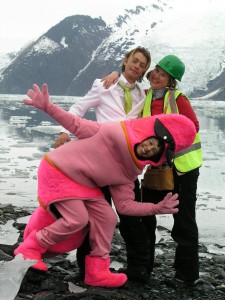
Cara, in the green hat, posing with fellow youth climate ambassadors Aart and Erika in Alaska, 2008. They were filming publicity stunts for their climate-saving projects.
She will be writing a guest blog here in the next couple of days. If you take a look at the Ice Blog banner, the lady with the beige hat in the kayak is Cara. I took the photo from the kayak behind during the trip to Alaska in 2008 when the Ice Blog was born. The expedition was to find out about the impacts of climate change on the Arctic, including a trip to the Arctic research station in Barrow, meetings with local people in the northernmost town in the USA and a visit to the receding Begich Boggs glaciers near Whittier.
I was thrilled when Cara told me recently she had been chosen a “Climate Reality Leader” and invited to a climate workshop with Al Gore in Istanbul. Expect more on that in her guest post for the Ice Blog very soon. As it turned out, she and her fellow “climate leaders” ended up bang in the middle of the pro-democracy protests.
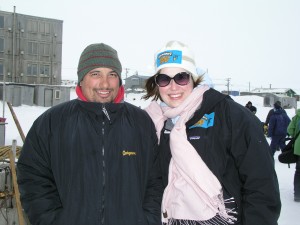
Cara and Kayan – “Give me a solar-powered snow mobile and I’ll use it” was the young Eskimo’s quip in Barrow, Alaska.
Cara is one of those committed people who live, work and think climate. She set up Ireland’s first website on “greening” your home, worked on biofuels at Dublin University and now successfully runs her own consultancy.
“Baked Alaska” – Picture gallery from the Climate Change College Expedition to Alaska
How big is Chinese interest in Greenland?
I have come across an interesting perspective on this on www.chinadialogue.net. “The Chinese scramble into Greenland is overhyped” is the headline of an article by Jonas Parello-Plesner. The author maintains there is little evidence of a Chinese scramble for the Arctic. This would seem to contradict a lot of what I have been hearing and reading, so the title jumped out at me. The article appears on a bilingual English-Chinese site dealing with environment-related issues.
Clearly, Beijing is interested in accessing mineral resources all over the world. As far as the Arctic is concerned, the question, it seems to me, is to what extent that interest is already turning into involvement. The trade agreement with Iceland is one sure sign of interest in the shipping routes through the Arctic, as discussed here on the Ice Blog and in various articles over the past year or so. The new Chinese icebreaker and Chinese voyages through the High North are other indicators of interest turning into activity. When it comes to Greenland, Jonas Parello-Plesner has some interesting points. Let me quote one of them: “Actually, the public face of Chinese involvement, Xiaogang Hu of London Mining, who was spearheading a high profile investment in an iron ore project, left his position in April. Locals explained this as a result of new Greenlandic leader Hammond’s intention to revise the Large Scale Act, which was enacted under the previous government and allows scores of foreign workers on mining projects. Xiaogang was als the link to Chinese investors like Sichuan Xinye Mining Investment or the China Development Bank.”
This is, I believe, an interesting development. “It looks like Chinese investors – and their workers – are waiting and watching, rather than invading,” is the article’s conclusion from this. Remember all the talk of the 2,000 Chinese workers reported to be heading for Greenland? Concern about this was said to be one of the factors that led to the change of government. Understandably, the Greenlanders would like to have the wealth to fund independence from Denmark. But at what cost? The major price could well be environmental destruction. The other question for the island’s leaders is how they can ensure that Greenland actually benefits from mining or drilling activities. The small population would have to work with foreign partners. The new government has introduced royalties to prevent profits disappearing offshore. Parello-Plessner says the challenge for Greenland is not just how to deal with Chinese interest, but “how to transform into a successful resource economy”.
I think he puts the situation in a nutshell: “With its tiny population, there are question marks over the ability of Greenland’s small negotiation teams to secure sufficiently stringent criteria that ensure investments are sustainable and environmentally acceptable. If it is unsuccessful, Greenland might simply become like other resource rich countries before it – it might think it had hit the resource jackpot, only to find out that it was really a curse.”
Meanwhile, Greenland’s ice continues to melt. Let us not forget the reasons for the opening-up of the Arctic. And what consequences human-made climate warming will have for people all over the globe. Here is a link to one interesting recent report on the Greenland melt and implications for sea level rise:
At the big climate change impacts conference I attended in Potsdam recently, the experts stressed the need to adapt to climate change now and not wait for international agreements. Adaptation has become a necessity to avoid or minimize damage from climate-related events. I often wonder whether this could take attention away from the need to mitigate. Wolfgang Lucht from the Potsdam Institute for Climate Impacts thinks it is the other way round. The more we know about the measures needed to deal with likely impacts, the more urgent becomes the need to mitigate climate change by reducing emissions. Our capacity to adapt is not unlimited, says Lucht, who also holds a chair in sustainability science at Berlin’s Humboldt University. “We have evidence that climate change could have played a role in the collapse of complex civilizations. It is not certain, but there are signs that changes in the environment could have had a major impact, for instance through changing the availability of resources a society relied on”.
Can we keep that in mind when it comes to developing the Arctic for more oil, gas and minerals?
Indigenous unite at Arctic meeting
Alta in far northern Norway was the scene of a key meeting of indigenous representatives from all over the world this week. The meeting was hosted by the Sami, the indigenous people of Scandinavia. The representatives signed a document taking UN member countries to task for “perpetuating the historic marginalization and exploitation of their rights and resources, most recently manifested in the illegal takeover of land by governments and multinational corporations in a race to meet the escalating global demand for food, fuel, fiber and mineral wealth”, according to a statement by Tebtebba. (Indigenous Peoples’ International Centre for Policy Research and Education)
This “Alta Declaration” is part of preparations for the World Conference on Indigenous Peoples which will take place in New York in September 2014. The statement calls on UN members to halt development models which are damaging to the livelihoods and health of indigenous peoples and the environment, “from forests and peatlands to rivers and glaciers that are of great global significance in the battle against the catastrophic effects of climate change”.
The chair of the meeting, Victoria Tauli-Corpuz said “I believe strongly that indigenous people are going to be the one who will save Mother Earth from ending in a disastrous situation”. That is an inspiring thought, but it would be quite a tall order and a huge responsibility to impose on the indigenous peoples, given the contributions the rest of us have been making to pollution and climate change. “We are in a very serious crisis – the environment is very much under stress. We have proven that the remaining ecosystems, the remaining lands and territories, the remaining oceans and waters – those that are still able to provide the basic needs of its populations – are found in our territories”, said Tauli-Corpuz, who heads Tebtebba, which is based in the Philippines.
The Arctic gold rush is clearly affecting Arctic indigenous peoples directly. But as the recent Arctic Council meeting showed, the rest of the world is taking a huge interest in claiming any “benefits” human-induced climate change is producing, in the form of easier access to the region and its resources.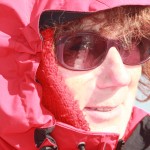
It will also be interesting to observe the positions taken by indigenous peoples in places like Greenland. Wealth from mining or drilling to access resources is a tempting prospect, and could contribute towards increased autonomy. At the same time, there are clearly enormous risks to the environment. Is sustainable development of the “high north” possible at all?
Arctic Ocean acidification – kids’ stuff?
June 8th is World Oceans Day, so I am taking the opportunity to draw attention to the increasing acidification of the Arctic Ocean. CO2 makes the seas more acidic when it is absorbed from the air. This process is faster in cold water, making the Arctic particularly susceptible to this climate change impact. A study published earlier this year by scientists from the Arctic Monitoring and Assessment Programme (AMAP), based on monitoring over the last three years shows that the Arctic Ocean is rapidly accumulating carbon dioxide, leading to increased ocean acidification. This is having an impact on the marine ecosystem. The probem is exacerbated by increasing flows of fresh water from rivers and melting land ice. Creatures like pteropods, or sea butterflies, are likely to be harmed. Any marine life that needs calcium to form its skeleton or shell will be at risk, followed by the predators dependent on them.
My attention was drawn recently to a video cartoon produced back in 2009 aimed at teaching young people about ocean acidification, a concept which is not easy to grasp. I think it is great! Well done kids!
The animation was produced by pupils from Ridgeway School (Plymouth, UK) and Plymouth Marine Laboratory with funding from EPOCA the European Project on Ocean Acidification (www.epoca-project.eu). I recommend a look. Adults can learn something from it as well as kids! It is a great way to explain the concept, an entertaining video, and the idea of teaching young people about the problems our lifestyles are causing is a key element in securing a sustainable future. I recently acquired a copy of a book in German with a similar aim: Tessi & Tipo. Die Entdeckung der Ozeanversauerung. (ISBN 978-3-86918-204-9)It was written by Antje Funcke and Konstantin Mewes, young scientists at AWI, the Alfred—Wegener-Institut, Germany’s polar science body. Nice work!
The Oslo-based “Center for International Climate and Environmental Research” has a good summary of the AMAP report on its website. I reported on an EPOCA experiment to measure ocean acidification in the Arctic off Spitzbergen in 2010. Greenpeace had helped the scientists by offering the Esperanza to transport the “mesocosms” for the experiments up north. The story is online here: Scientists enter unusual alliance to study Arctic Ocean.
Arctic summers to be ice-free earlier?
Scientists studying Arctic sea ice say ice-free summers could be on the horizon sooner than many expected. A new analysis by NOAA scientists James Overland (NOAA Pacific marine Environmental Laboratory) and Muyin Wang (NOAA Joint Institute for the Study of Atmosphere and Ocean at the University of Washington) considered three methods of predicting when the Arctic will be nearly ice free in the summer. All three suggest nearly ice-free summers in the Arctic before the middle of this century, says Wang, although the actual dates differ widely. One method suggests the Arctic could be nearly sea ice free in summer as early as 2020.
“Rapid Arctic sea ice loss is probably the most visible indicator of global climate change; it leads to shifts in ecosystems and economic access, and potentially impacts weather throughout the northern hemisphere,” said Overland. “Increased physical understanding of rapid Arctic climate shifts and improved models are needed that give a more detailed picture and timing of what to expect so we can better prepare and adapt to such changes. Early loss of Arctic sea ice gives immediacy to the issue of climate change.”
The paper was published recently online in Geophysical Research Letters.
Overland said the differences between the models could lead some people to conclude that models are not useful. In fact the opposite is the case, he said. “Models are based on chemical and physical climate processes and we need better models for the Arctic as the importance of that region continues to grow.”
Taken together, the range among the multiple approaches still suggests that it is very likely that the timing for future sea ice loss will be within the first half of the 21st century, with a possibility of major loss within a decade or two, the authors say.
Other recent studies have indicated the key role of shrinking Arctic sea ice in influencing our weather. The shrinking sea ice is shifting polar weather patterns, especially in autumn and winter, according to one new climate modeling study.
Researchers looked at weather patterns in 2007, when sea ice covering the Arctic Ocean hit one of its lowest summer extents since satellite tracking began in the late 1970s.
In autumn and winter, when sea ice would normally insulate the ocean from frigid Arctic air temperatures, the small ice pack meant lots of heat could escape from the ocean into the atmosphere, the study found. The heating changed atmospheric circulation patterns in the Arctic, said study leader Elizabeth Cassano, a climate scientist at the Cooperative Institute for Research in Environmental Sciences (CIRES) in Boulder, Colorado. The results were published May 21 in the International Journal of Climatology.
Becky Oskin from LiveScience talked to Cassano about the study and quotes: “What we saw, particularly in the fall and winter, was a decrease in [atmospheric] pressure over the areas of open water.” Areas of high and low pressure drive weather, with low pressure producing stormier weather and high pressure leading to clear, calm days, Cassano said. The group’s computer model generally agreed with weather records from the latter half of 2007, according to the study.
While the summer ice melt had a significant effect into the winter, there was little change in weather patterns in early 2007, before the ice pack shrank, the study found. However, Cassano points out that the climate model doesn’t include a major high-pressure system that was in the Beaufort Sea north of Alaska and played a role in the big ice melt. Its absence could affect the modeling results.
The researchers now plan to examine how the feedback between sea ice and the atmosphere alters weather in the United Statse and other regions, Cassano said. “There’s an open question of how these changes that we see in the Arctic influence the weather that we see here in the mid-latitudes,” she said.
Given the weird weather we are experiencing in different parts of Europe at the moment, interest in whether climate change could be directly or indirectly responsible is high. Finnish Lapland has been experiencing a heatwave. Colleagues of mine have returned from the south of France complaining it was unexpectedly cold. Here in the normally mild Rhineland, we have also had very low temperatures and heavy rain. Meanwhile southern and eastern parts of Germany are being hit by severe flooding.
Renowned German scientist Stefan Rahmstorf and his colleagues at the Potsdam Institute for Climate Impact Research have apparently been contacted by various media, asking them if the rain and flooding are connected to climate change. He refers readers to a study on extreme weather they published in Nature Climate Change a year ago. Let me close by sharing his quote from that study, which he shares again in the climate blog SciLogs:
“Many climate scientists (including ourselves) routinely answer media calls after extreme events with the phrase that a particular event cannot be directly attributed to global warming. This is often misunderstood by the public to mean that the event is not linked to global warming, even though that may be the case — we just can’t be certain. If a loaded dice rolls a six, we cannot say that this particular outcome was due to the manipulation — the question is ill-posed. What we can say is that the number of sixes rolled is greater with the loaded dice (perhaps even much greater). Likewise, the odds for certain types of weather extremes increase in a warming climate (perhaps very much so). Attribution is not a ‘yes or no’ issue as the media might prefer, it is an issue of probability. It is very likely that several of the unprecedented extremes of the past decade would not have occurred without anthropogenic global warming. Detailed analysis can provide specific numbers for certain types of extreme, as in the examples discussed above.
In 1988, Jim Hansen famously stated in a congressional hearing that “it is time to stop waffling so much and say that the evidence is pretty strong that the greenhouse effect is here”. We conclude that now, more than 20 years later, the evidence is strong that anthropogenic, unprecedented heat and rainfall extremes are here — and are causing intense human suffering.”





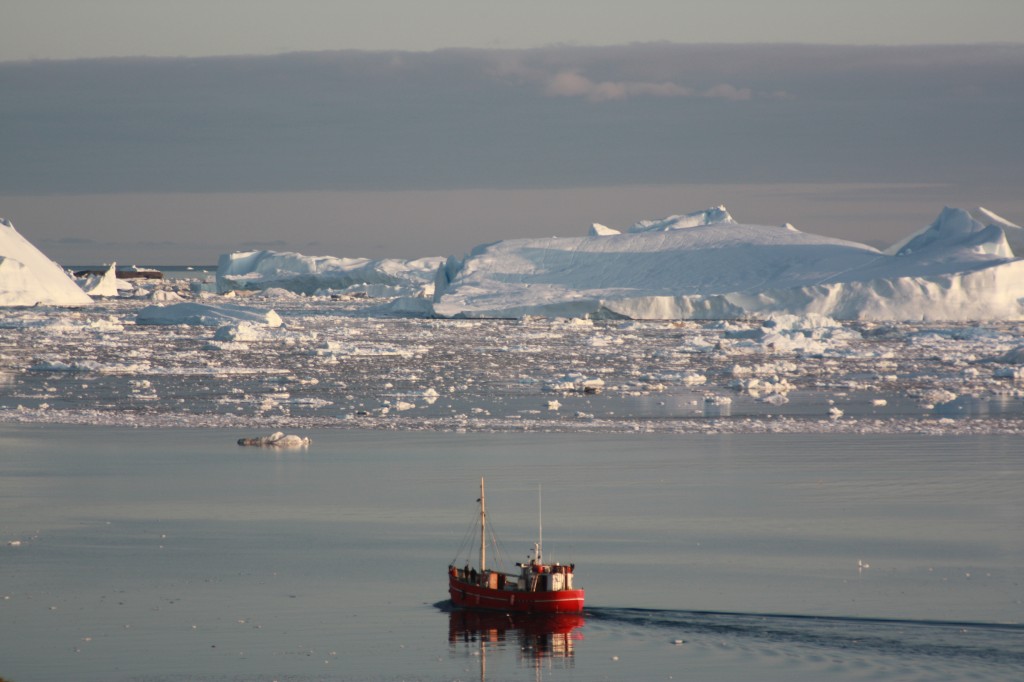

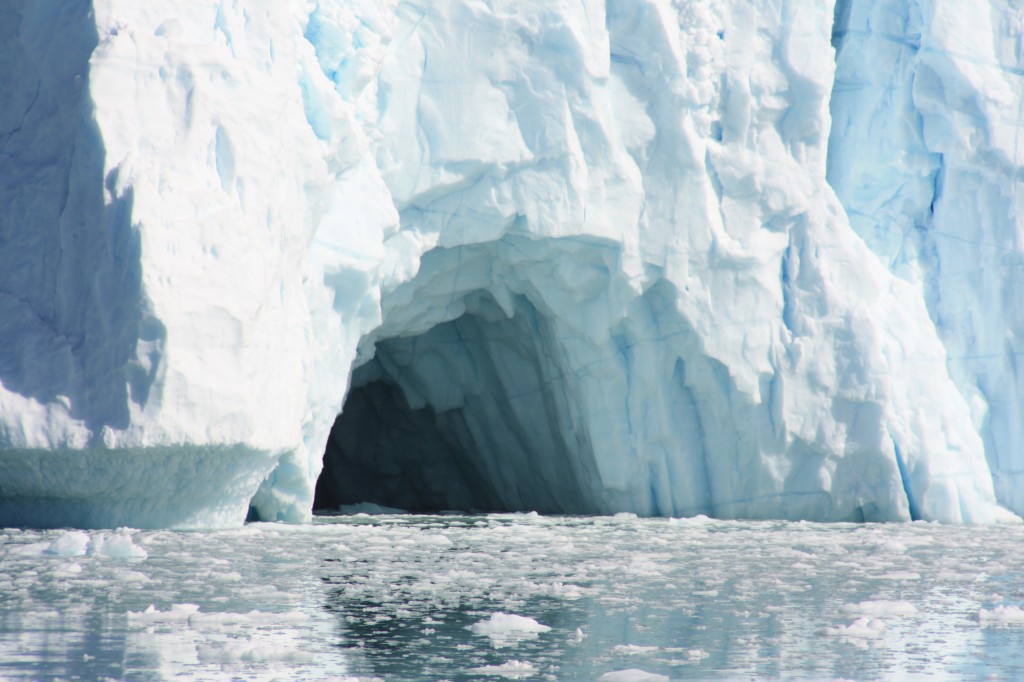
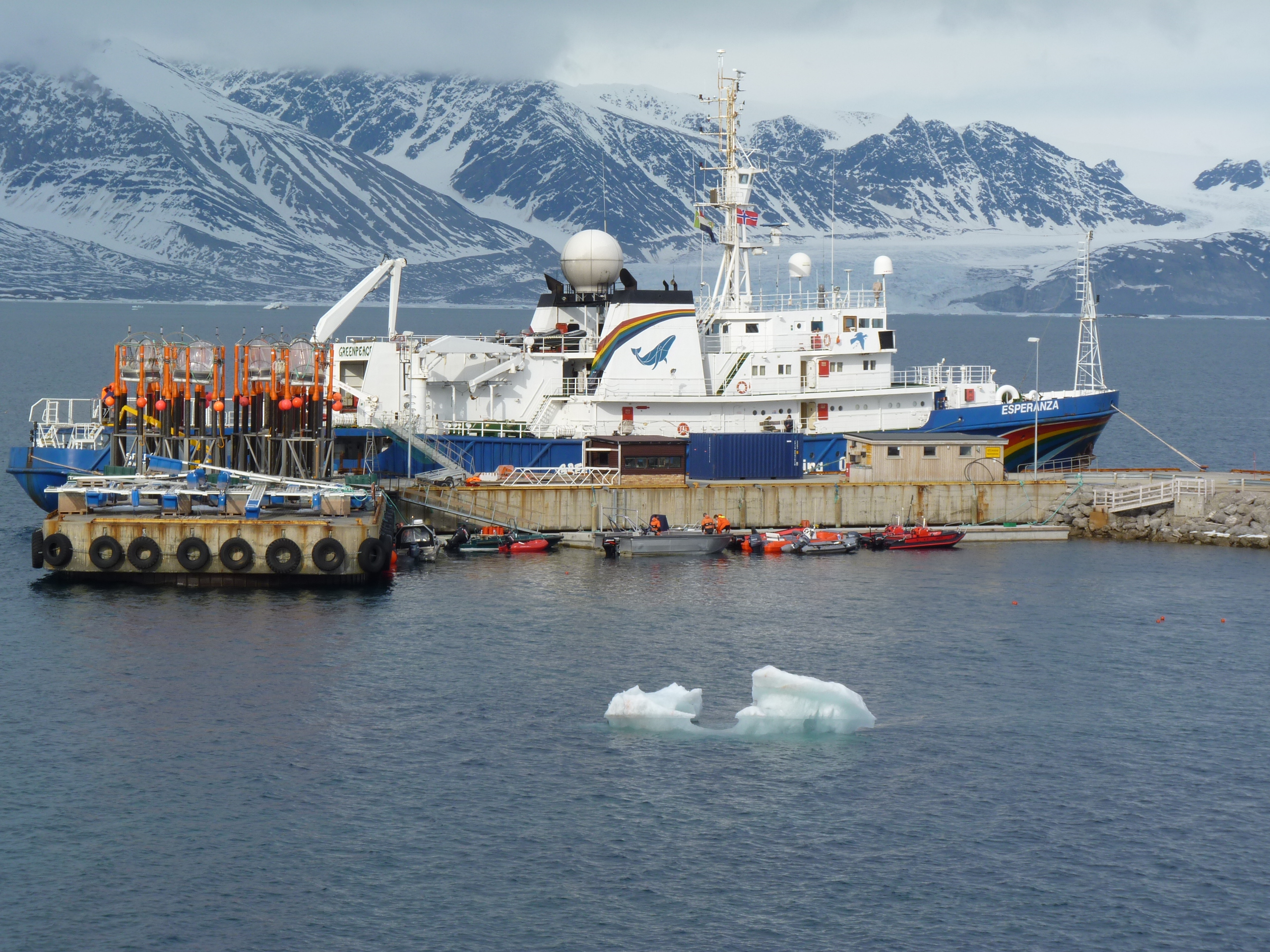
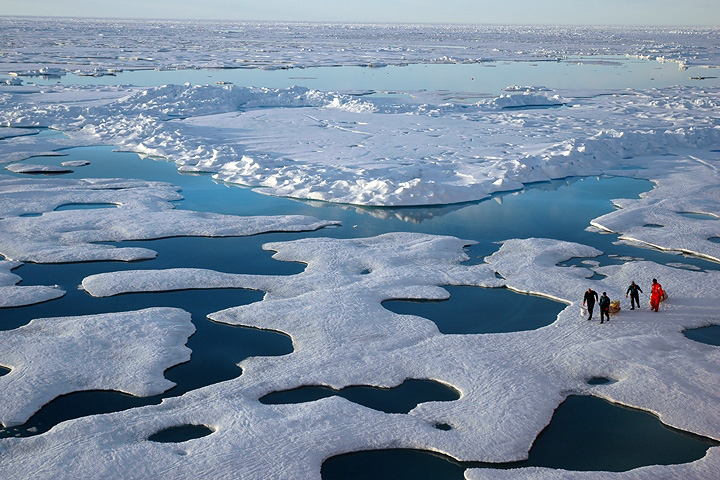

















Feedback